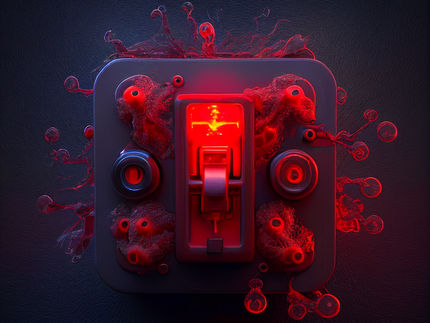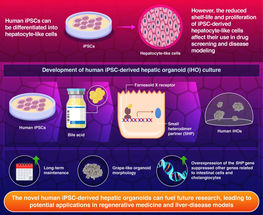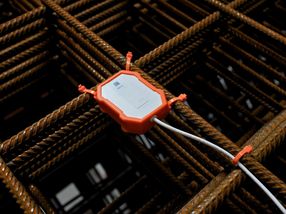How recurrent strep A infections affect the brain
Researchers have discovered how immune cells triggered by recurrent Strep A infections enter the brain, causing inflammation that may lead to autoimmune neuropsychiatric disorders in children. The study, performed in mice, found that immune cells reach the brain by traveling along odor-sensing neurons that emerge from the nasal cavity, not by breaching the blood-brain barrier directly. The findings could lead to improved methods for diagnosing, monitoring, and treating these disorders.
Recurrent Group A streptococcus (S. pyogenes) infections, which cause "strep throat," have been linked to autoimmune neuropsychiatric disorders, notably Pediatric Autoimmune Neuropsychiatric Disorders associated with Streptococcal infections, or PANDAS. Children with PANDAS exhibit Tourette's syndrome-like motor and vocal tics or obsessive-compulsive behaviors that appear to happen "out of the blue."
The Strep A bacterial cell wall contains molecules similar to those found in human heart, kidney, or brain tissue, according to a co-leader of the study, Dritan Agalliu, PhD, Assistant Professor of Pathology and Cell Biology (in Neurology and Pharmacology) at CUMC. These "mimetic" molecules are recognized by the immune system, which responds by producing protective antibodies. But because of this molecular mimicry, the antibodies react not only to the bacteria but also to the host tissues, producing autoantibodies that attack the body's own tissues. Previously, scientists did not understand how these autoantibodies would gain access to the brain, because brain vessels form an extremely tight blood-brain barrier that prevents free movement of molecules, antibodies and immune cells from the blood into the brain.
A few years ago, researchers discovered that recurrent Strep A infections trigger the production of immune cells known as Th17 cells, a type of helper T cell, in the nasal cavity. But it was unclear how these Th17 cells lead to brain inflammation and symptoms such as those seen in children with PANDAS.
Studying the tissues of mice infected intranasally with Strep A, Drs. Agalliu and colleagues found that bacterial-specific Th17 cells move along the surface of olfactory, or odor-sensing, axons that extend from the nasal cavity through the cribriform plate, a sieve-like bone that separates the nasal cavity from the brain. From there, the cells reach the olfactory bulb in the brain, which processes information about odors.
"Once the Th17 cells enter the brain, they break down the blood-brain barrier, allowing autoantibodies and other Th17 cells to enter the brain and promote neuroinflammation," said Dr. Agalliu. "What's interesting is that we see abundant Group A Strep bacteria in the nose, but they never penetrate the brain," he added. "This is different from Group B Strep--the cause of bacterial meningitis--which causes neuroinflammation by entering the brain directly."
The findings may lead to a more definitive diagnostic test for PANDAS, which is currently diagnosed based on clinical symptoms and the presence of Strep A infection or autoantibodies against brain proteins. "We are also interested in exploring ways to treat the disorder by repairing the blood-brain barrier itself to prevent the entry of autoantibodies into the brain," said Dr. Agalliu.
Original publication
Thamotharampillai Dileepan, Erica D. Smith, Daniel Knowland, Martin Hsu, Maryann Platt, Peter Bittner-Eddy, Brenda Cohen, Peter Southern, Elizabeth Latimer, Earl Harley, Dritan Agalliu and P. Patrick Cleary; "Group A Streptococcus intranasal infection promotes CNS infiltration by streptococcal-specific Th17 cells"; JCI; 2015
Most read news
Original publication
Thamotharampillai Dileepan, Erica D. Smith, Daniel Knowland, Martin Hsu, Maryann Platt, Peter Bittner-Eddy, Brenda Cohen, Peter Southern, Elizabeth Latimer, Earl Harley, Dritan Agalliu and P. Patrick Cleary; "Group A Streptococcus intranasal infection promotes CNS infiltration by streptococcal-specific Th17 cells"; JCI; 2015
Organizations
Other news from the department science

New Label-Free Imaging Tracks Cancer Treatment in Single Cells
One Tool, Many Applications

The evolution of cancer cells decoded
"Our vision is a new type of early cancer detection"

Get the life science industry in your inbox
By submitting this form you agree that LUMITOS AG will send you the newsletter(s) selected above by email. Your data will not be passed on to third parties. Your data will be stored and processed in accordance with our data protection regulations. LUMITOS may contact you by email for the purpose of advertising or market and opinion surveys. You can revoke your consent at any time without giving reasons to LUMITOS AG, Ernst-Augustin-Str. 2, 12489 Berlin, Germany or by e-mail at revoke@lumitos.com with effect for the future. In addition, each email contains a link to unsubscribe from the corresponding newsletter.






















































